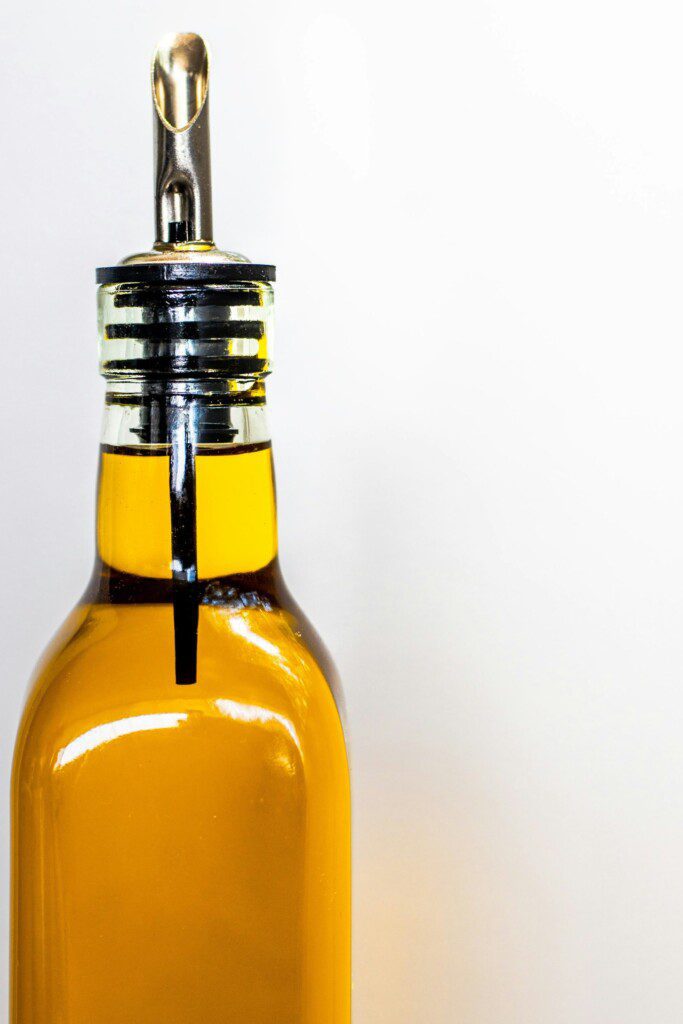
Sizzling Truth: Extra Virgin Olive Oil for Cooking – A Resounding ‘oui’!
Baking with extra virgin olive oil: yes or no?
You are standing in front of a shelf full of bottles of olive oil and your courage sinks, because which one do you choose for which preparation? Italian or Spanish? The expensive or the cheap liter bottle? And extra virgin olive oil for salad and cold dishes, because you are not allowed to fry with that, right?
If you are just starting to cook, the range of olive oils is overwhelming. In the supermarket alone, there are easily 15 different types of olive oil.
There is extra virgin, ‘regular’ olive oil, mild olive oil and all sorts of other inventions from the big fishmonger. The reason? Hot and cold dishes require a different oil.
‘Baking with extra virgin olive oil is dangerous’
Warnings are flying around your ears: ‘you must not heat extra virgin olive oil’, ‘the burning point is too low, which means that when heated, substances are converted that are carcinogenic’, and the taste is also said to become ‘nasty’ after exposure to heat.
Chances are your parents, friends, or other cooking mentors in your life have said this so often that you’ve embraced their advice and consistently buy two different types of olive oil: a “mild” or regular olive oil for frying, and an extra virgin olive oil for a final drizzle on a salad or bowl of hummus.
Southerners do it differently
But if you go on holiday to the south and come across the kitchen cupboards there, you will only find one type of olive oil: extra virgin. Italians, Spaniards, Greeks and so on do fry in extra virgin olive oil. Is it perhaps healthier than we think?
The Mediterranean diet (lots of fruit, olive oil, vegetables, fish and whole grains) is praised for its beneficial effects: women are said to get pregnant faster during IVF , it reduces lung diseases and is said to reduce the risk of heart failure, among other things. So, what about those toxic substances that are released when you fry with extra virgin olive oil?
The Keuringsdienst van Waarde investigated whether or not you can fry in extra virgin olive oil
The Keuringsdienst van Waarde raised an eyebrow and decided to investigate where the – persistent – misunderstanding surrounding extra virgin olive oil comes from. Because, as it soon turns out: you can bake perfectly well with extra virgin olive oil.
It even turns out to be a lot healthier than mild or classic olive oil. For this, the olives that fall to the ground during the harvest and rot are used. ‘Even worms have eaten it,’ says olive oil farmer Alfonso Raez in the broadcast.
‘In the past, they used these insect-eaten olives to make lamp oil. They call it lampante oil. But the industry has found a trick to make olive oil from this fuel.’ Here you can read what that refining process looks like.
Several studies have shown that baking with extra virgin olive oil is healthier than the refined variety. The antioxidants, polyphenols and vitamin E present are retained in the oil.
So what about the smoke point?
Olive oil has a smoke point of at least 180 degrees, which is a green flag if you want to fry with it. The higher the quality of the oil, the more stable the olive oil is when heated. Some extra virgin olive oils can easily reach 210 degrees before burning.
So you can even fry (the ideal frying temperature is around 175 degrees) in olive oil if you are in a big spender mood , because of course it is not cheap.
Where does the myth about toxic substances come from?
The Keuringsdienst van Waarde asked olive oil taster Wilma van Grinsven-Padberg. According to her, that story was helped into the world because olive oil used to be pressed with gray millstones.
Van Grinsven-Padberg: ‘This process leaves pit and skin residues in the olive oil, and these residues can burn during heating. These burnt residues are unhealthy, but that has nothing to do with frying in extra virgin olive oil.’ She adds: ‘Nowadays, almost all oil is filtered.’
In short: You can bake perfectly well with extra virgin olive oil, it is even healthier.
Note that the beautiful aromas of an expensive bottle of extra virgin olive oil become less pronounced after heating. So save your special oil to drizzle over pasta at the end, to wipe up with warm bread or to whisk into a nice vinaigrette. And buy a bottle of extra virgin olive oil for next to the stove for ten euros.
Curious about the entire episode of the Keuringsdienst van Waarde about olive oil? Watch it here:
Inspection Service of Value – Olive Oil
An olive, a press and voila: olive oil. Simple enough, you might say, but leave it to the Dutch grocer’s mentality to make something extremely complex out of it. There is olive oil mild and olive oil traditional. Classico and Extra Virgin. For cold, lukewarm and hot. Meat, fish and chicken. So many types that choosing is almost impossible. Because what is the difference?
